#edwardian england
Explore tagged Tumblr posts
Text

I thought Cambridge Spies was *the* most British thing I’d ever seen, until I watched Maurice shortly after. I’m still on my Toby Stephens kick, which explains Cambridge Spies, and lord, is he pretty in it. But I also wanted to ogle the very young, stunningly beautiful Hugh Grant in Maurice, so I watched both.

I nursed a bit of a crush on Grant back in his Four Weddings days, around the same time as Maurice, but I’d honestly forgotten how incredibly, ethereally gorgeous he was, like some androgynous nymph out of a Waterhouse painting, smooth and luscious, too perfect to be real. For the record, I do love today's older, rougher Hugh, who has managed, over time, to turn ass-hole-ish curmudgeonliness into a charming brand all his own.
My overall impression of Merchant Ivory flicks is that they are much like paintings: pretty to look at, and if you stare long enough, something in your field of view eventually moves, but it takes, like, days. Days. I don’t know if my attention span has been worn down over the decades like everyone else’s, or if these movies need some tighter editing, but good lord, at two hours and twenty minutes, not much happens in Maurice. Or is it EM Forster? Maurice is a Forster adaptation; and similarly, so is A Room with a View, which also flows like molasses. I’ll never know if it’s the writing or the editing, because I’ve never read anything of Forster’s except for Room, which I attempted when I was a teenager and quit halfway through, because what in the fuck was he going onnnnn about? And I even had a better attention span back then, in the nineties. I said to my husband after Maurice ended, perhaps he and I needed a course on Forster to truly appreciate the literature and the movie adaptations. It’s unlikely to happen, but there it is.
Maurice follows the lead character, played by James Wilby, as he discovers and wrestles with his latent homosexuality. Hugh Grant plays Clive Durham, Maurice’s good school friend and first (unconsummated) love. The two men pal around London and the countryside as they age well into their twenties, spending time together and apart, both grappling with their sexual identities in different ways. The movie also casts a very cute Rupert Graves as Maurice’s first lover, and Ben Kingsley (with hair and a weird American accent—what a hoot) appears in a cameo as a shrink who attempts to hypnotize Maurice into heterosexuality.

My bitching isn’t a condemnation of Forster or Merchant Ivory; the film was a rather pretty little trifle to look at. I thought the story was good, and I love that a major film studio was tackling the horrors of being gay in Edwardian England so long ago (1987, when AIDS was still considered “the gay cancer.” —Hats off to them.) And I’m always game to watch pretty boys cavorting about. There was a good deal of that, one scene with full frontal nudity (gasp!)
Speaking of pretty boys, several feature in Cambridge Spies, which takes place about thirty years after Maurice, shortly before WWII. The prettiest of them is Toby Stephens, who is just dashing dressed in wide leg trousers, fedoras, and the well-tailored suits of the era. He plays Kim Philby, one of the notorious Soviet spies that comprised the group known in real life as the Cambridge Five. Rupert Penry Jones plays Donald Maclean; Samuel West is Anthony Blunt, and Tom Hollander is Guy Burgess. Since American public-school curriculum doesn’t teach any history but its own, (much of which is white-washed lies, but that’s a kvetch for another day), I never knew about the British turncoats until I watched this, which was last week. Yay for me.

Spies is a four-part miniseries, the last two episodes of which are far, far more entertaining and engaging than the first two. It’s good they decided to balance the episodes thusly, as I was ready to throw in the towel after the second one. The only reason I continued on was because I’d already invested time in watching the first 50 percent—in for a penny, in for a pound. I think the writers wanted the first two episodes for back-story and character development, but there is little that reveals the principals’ various motivations for spying other than that they were all friends at Cambridge, and they shared a deep hatred of fascism. Weird that that was all it took, right? I dunno, maybe I missed something—these were the two most boring episodes.
The entire series really belongs to Tom Hollander. He steals every scene he’s in; he has the best lines, the most cuttingly funny remarks, and he’s the craziest and loosest cannon of the bunch, hence, the most entertaining. Previously, I’d only known his work from 2005’s Pride and Prejudice (the boiled potatoes), and from his creepily-repressed turn as art critic John Ruskin in Desperate Romantics. He’s great and memorable in those, but he is phenomenal in Spies.
Hollander’s Burgess, as well as West’s Anthony Blunt, are gay men, compelling because they'd opted into an overwhelmingly straight-male power structure: espionage. Spies doesn’t really speak to this much, rather than to have Hollander portray Burgess as an out and proud gay man, I suppose as much as one could be on the brink of WWII in England. But it is striking to see the difference just three decades made in how gays were perceived by English society (or not) when you compare the attitudes on display in Maurice to those in Spies. Homosexuality was the worst sin one could commit in the world of Maurice; but by the time we get to Spies, it’s barely an issue. I suspect that homosexuality was still offensive to many in England at the time, as that country’s decriminalization law only took effect in 1967, but for some reason unknown to me, the writers and producers of Spies made it mostly a non-issue.
Overall, Spies was a good series, educational for me, at least, and I got to stare at Toby Stephens for four hours, including a couple safe-for-granny sex scenes. Would I write home about the show? —probably not, but it was not wasted time.

Tom Hollander’s best scene (and they’re all good) is a tantrum he throws during a trip to the States, where he drives across suburban lawns, destroying several white picket fences, then stands atop his car screaming “God Bless America” (in a good American accent), and decries this country’s never-acknowledged social and political hypocrisy.
Brilliant. And funny.

#period dramas#cambridge spies#maurice#toby stephens#tom hollander#hugh grant#wwII england#edwardian england#movie review#tv review
19 notes
·
View notes
Text
Saw a few comments on YouTube from someone who ships Clive x Maurice and who hates Alec along the lines of “servant work is not actual work” (in referring to George Merrill who lived with Edward carpenter as his servant), and also “poor people can’t find lasting love and happiness because of poverty”… I was speechless
And they got like 7 likes—not a big number but damn I didn’t realize we’re still in Edwardian England.

#em forster#alec scudder#edward carpenter#george merrill#maurice#maurice 1987#maurice em forster#maurice hall#clive durham#1900s#edwardian era#Edwardian England#em forster maurice
161 notes
·
View notes
Text

#the rise of the plutocrats#edwardians#edwardian england#1970s#non fiction#hardback#history#dust jacket#vintage#constable books#edwardian photography#plutocrats#plutocrat#society#sociology#jamie camplin
4 notes
·
View notes
Text
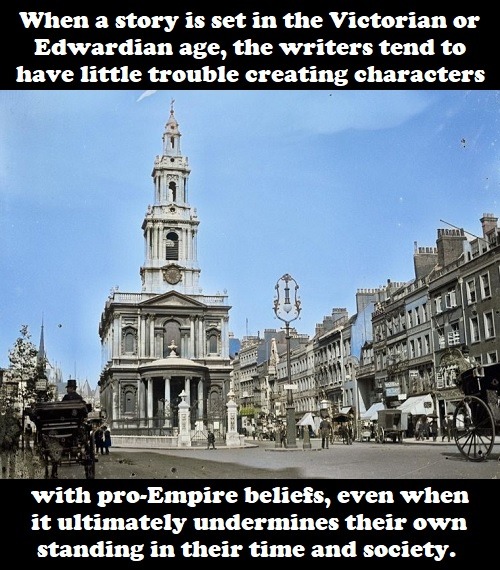
When a story is set in the Victorian or Edwardian age, the writers tend to have little trouble creating characters
with pro-Empire beliefs, even when it ultimately undermines their own standing in their time and society.
#Inspector Spacetime#Unnaturally Human (episode)#Gang of Blood (episode)#Deliberate Values Dissonance (trope)#Deliberate Values Dissonance#when a story is set in#Victorian England#Victorian era#Edwardian England#Edwardian age#scriptwriters#tend to have little trouble#creating characters#with pro-Empire beliefs#even when it undermines#their own standing#in their time and society
2 notes
·
View notes
Text
"A Breath of Fresh Air: E. M. Forster's 'A Room with a View'"
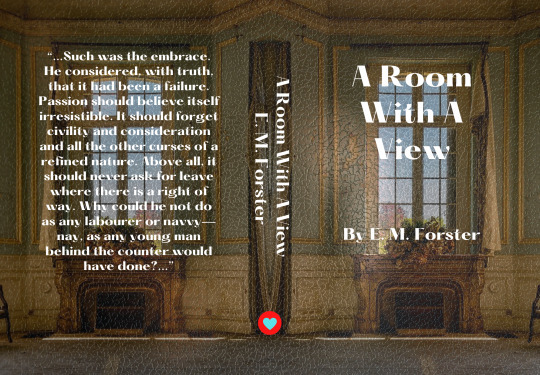
E. M. Forster's "A Room with a View" is a delightful exploration of love, freedom, and self-discovery set against the backdrop of Edwardian England and Italy. Published in 1908, the novel follows the journey of Lucy Honeychurch, a young woman torn between societal expectations and her own desires for independence and fulfillment.
At its heart, "A Room with a View" is a coming-of-age story that resonates with timeless themes of identity and personal growth. From the picturesque hills of Florence to the genteel drawing rooms of England, Forster paints a vivid portrait of a young woman's awakening to the possibilities of life and love. Lucy's journey towards self-realization is both poignant and humorous, as she navigates the complexities of societal norms and her own inner turmoil.
Forster's prose is both elegant and accessible, imbuing the narrative with a sense of warmth and intimacy. The novel is filled with memorable characters, from the eccentric Emersons to the prim and proper Charlotte Bartlett. Through their interactions, Forster explores themes of class, gender, and cultural differences, challenging readers to question the arbitrary boundaries that divide society.
Central to the narrative is Lucy's evolving relationship with George Emerson, a free-spirited young man whose unconventional views on love and life challenge Lucy's preconceived notions. Their burgeoning romance unfolds with a delicate blend of humor and tenderness, as Lucy grapples with her feelings of attraction and the expectations placed upon her by society.
The novel's title itself serves as a metaphor for the dichotomy between convention and liberation. A "room with a view" symbolizes the desire for openness and freedom, a longing to break free from the constraints of societal expectations and embrace life's possibilities. For Lucy, it represents not only physical space but also the emotional and spiritual freedom she seeks to attain.
Throughout the novel, Forster skillfully juxtaposes the idyllic landscapes of Italy with the stifling propriety of Edwardian England, highlighting the contrast between spontaneity and restraint, passion and repression. Italy, with its vibrant culture and sense of vitality, serves as a catalyst for Lucy's transformation, while England represents the suffocating conformity of bourgeois society.
At its core, "A Room with a View" is a celebration of the human spirit and the power of love to transcend social barriers. Forster's timeless tale reminds us of the importance of staying true to ourselves and following our hearts, even in the face of societal pressure and expectations. With its charming characters, evocative settings, and poignant themes, "A Room with a View" remains a captivating and resonant work that continues to enchant readers more than a century after its publication.
E. M. Forster's "A Room with a View" is available in Amazon in paperback 18.99$ and hardcover 25.99$ editions.
Number of pages: 494
Language: English
Rating: 9/10
Link of the book!
Review By: King's Cat
#E. M. Forster#A Room with a View#Edwardian England#Italy#Lucy Honeychurch#George Emerson#Love#Identity#Self-discovery#Social norms#Societal expectations#Romance#Freedom#Conformity#Individuality#Class differences#Gender roles#Cultural contrasts#Liberation#Repression#Relationships#Conflict#Coming-of-age#Society#Passion#Adventure#Travel#Emotional growth#Personal transformation#Symbolism
0 notes
Text
"A Breath of Fresh Air: E. M. Forster's 'A Room with a View'"

E. M. Forster's "A Room with a View" is a delightful exploration of love, freedom, and self-discovery set against the backdrop of Edwardian England and Italy. Published in 1908, the novel follows the journey of Lucy Honeychurch, a young woman torn between societal expectations and her own desires for independence and fulfillment.
At its heart, "A Room with a View" is a coming-of-age story that resonates with timeless themes of identity and personal growth. From the picturesque hills of Florence to the genteel drawing rooms of England, Forster paints a vivid portrait of a young woman's awakening to the possibilities of life and love. Lucy's journey towards self-realization is both poignant and humorous, as she navigates the complexities of societal norms and her own inner turmoil.
Forster's prose is both elegant and accessible, imbuing the narrative with a sense of warmth and intimacy. The novel is filled with memorable characters, from the eccentric Emersons to the prim and proper Charlotte Bartlett. Through their interactions, Forster explores themes of class, gender, and cultural differences, challenging readers to question the arbitrary boundaries that divide society.
Central to the narrative is Lucy's evolving relationship with George Emerson, a free-spirited young man whose unconventional views on love and life challenge Lucy's preconceived notions. Their burgeoning romance unfolds with a delicate blend of humor and tenderness, as Lucy grapples with her feelings of attraction and the expectations placed upon her by society.
The novel's title itself serves as a metaphor for the dichotomy between convention and liberation. A "room with a view" symbolizes the desire for openness and freedom, a longing to break free from the constraints of societal expectations and embrace life's possibilities. For Lucy, it represents not only physical space but also the emotional and spiritual freedom she seeks to attain.
Throughout the novel, Forster skillfully juxtaposes the idyllic landscapes of Italy with the stifling propriety of Edwardian England, highlighting the contrast between spontaneity and restraint, passion and repression. Italy, with its vibrant culture and sense of vitality, serves as a catalyst for Lucy's transformation, while England represents the suffocating conformity of bourgeois society.
At its core, "A Room with a View" is a celebration of the human spirit and the power of love to transcend social barriers. Forster's timeless tale reminds us of the importance of staying true to ourselves and following our hearts, even in the face of societal pressure and expectations. With its charming characters, evocative settings, and poignant themes, "A Room with a View" remains a captivating and resonant work that continues to enchant readers more than a century after its publication.
E. M. Forster's "A Room with a View" is available in Amazon in paperback 18.99$ and hardcover 25.99$ editions.
Number of pages: 494
Language: English
Rating: 9/10
Link of the book!
Review By: King's Cat
#E. M. Forster#A Room with a View#Edwardian England#Italy#Lucy Honeychurch#George Emerson#Love#Identity#Self-discovery#Social norms#Societal expectations#Romance#Freedom#Conformity#Individuality#Class differences#Gender roles#Cultural contrasts#Liberation#Repression#Relationships#Conflict#Coming-of-age#Society#Passion#Adventure#Travel#Emotional growth#Personal transformation#Symbolism
1 note
·
View note
Text
Motorised trolleys were a novelty on the streets of Old London
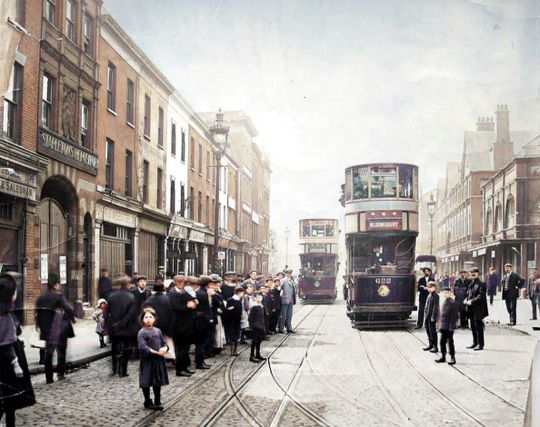
Commercial Street in Spitalfields, London, 1907
#Spitalfields#Old London#trolley buses#streetscape#UK#colourised#vintage photography#yesteryear#bygone era#streetcars#nostalgia#Edwardian England#trams#1907
51 notes
·
View notes
Text
Midnight in Everwood
A review of my Christmassy read from 2022
Over the last year, I’ve been reading a lot of retellings. I’ve enjoyed the different ways the authors take already known stories in different directions. I find it fascinating how the stories form and spin off from the original into something different that still retains some of the vibes and feelings of the original. Midnight in Everwood is a Nutcracker retelling which made me a little unsure…

View On WordPress
#Book Review#Books#Christmas#Edwardian England#English History#Fairytale Retelling#Fantasy#Historical Fiction#M. A. Kuzniar#Magic#Magical Realism#Retelling#The Nutcracker#YA Fantasy#Young Adult
0 notes
Text
Haven't been able to think about anything other than the victorian/edwardian/WW1 twink and his 80's punk almost-boyfriend for a week, send help
#this tv show has consumed my every thought#it's like tumblr catnip#go watch it#it will eat away at your brain#there's also a butch lesbian butcher#an autistic manga loving weirdo (my beloved)#and a badass psychic who's also a mess#WHAT MORE COULD YOU POSSIBLY WANT?#updating the post bc the reblogs lead me on a WILD wiki rabbit hole about the eras of England#okay so Edwin is born in 1900 which means he was born 1 year before the end of the Victorian era (1837-1901) so technically he's a victoria#baby who lived his childhood in the Edwardian era (1901-1910) and his teens in the pre/start of WW1 era (started in 1914)#until he was killed :( in 1916#so my boy here lived though MANY historical events and time periods#shout out to my victorian/edwardian/WW1 twink#history is very fun and this is why i love this website bc where else would i have to do research for my blorbo?#I do however find it very funny if Gaiman named him Edwin in honour of the Edwardian time period he grew up in#I love that man and it wouldn't surprise me if he turned out to be a history nerd (affectionate) like the rest of you#dead boy detectives#edwin payne#charles rowland#crystal palace#niko dbd#dbd#please feel free to dm me about history i adore it
962 notes
·
View notes
Text
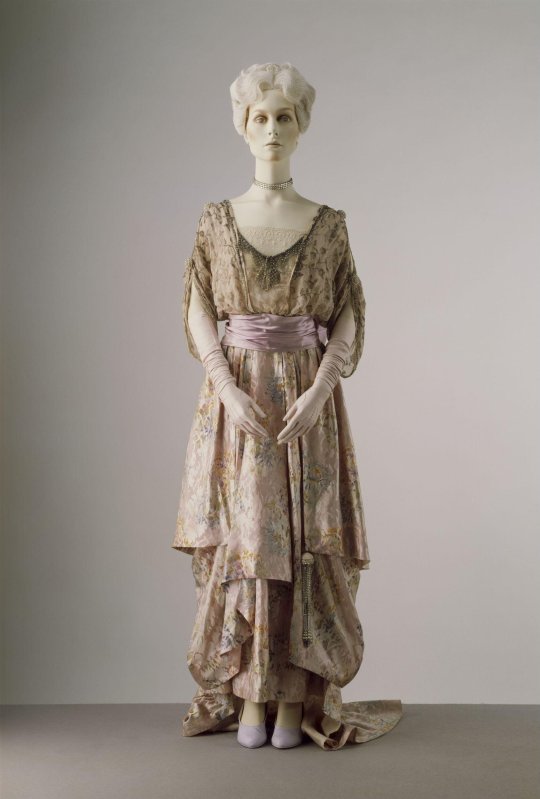
Evening Dress
c.1913
England or France
Victoria & Albert Museum (Accession Number: T.33-1947)
#evening dress#fashion history#historical fashion#1910s#belle epoque#edwardian#turn of the century#purple#off white#pink#silk#1913#england#20th century#france#v and a
888 notes
·
View notes
Text
Maurice (1987) directed by James Ivory




#maurice 1987#maurice#vintage#dark academia#old hollywood#aesthetic#moodboard#movies#80s#edwardian#period drama#hugh grant#james wilby#rupert graves#1910s#1900s#england#united kingdom#london#film
121 notes
·
View notes
Text
Thinking about Elizabeth Woodville as a gothic heroine is making me go insane. She entered the story by overturning existing social structures, provoking both ire and fascination. She married into a dynasty doomed to eat itself alive. She was repeatedly associated with the supernatural, both in terms of love and death. Her life was shaped entirely by uncanny repetitions - two marriages, two widowhoods, two depositions, two flights to sanctuary, two ultimate reclamations, all paralleling and ricocheting off each other. Her plight after 1483 exposed the true rot at the heart of the monarchy - the trappings of royalty pulled away to reveal nothing, a never-ending cycle of betrayal and war, the price of power being the (literal) blood of children. She lived past the end of her family name, she lived past the end of her myth. She ended her life in a deeply anomalous position, half-in and half-out of royal society. She was both a haunting tragedy and the ultimate survivor who was finally free.
#elizabeth woodville#nobody was doing it like her#I wanted to add more things (eg: propaganda casting her as a transgressive figure and a threat to established orders; the way we'll never#truly Know her as she's been constantly rewritten across history) but ofc neither are unique to her or any other historical woman#my post#wars of the roses#don't reblog these tags but - the thing about Elizabeth is that she kept winning and losing at the same time#She rose higher and fell harder (in 1483-85) than anyone else in the late 15th century#From 1461 she was never ever at lasting peace - her widowhood and the crisis of 1469-71 and the actual terrible nightmare of 1483-85 and#Simnel's rebellion against her family and the fact that her birth family kept dying with her#and then she herself died right around the time yet another Pretender was stirring and threatening her children. That's...A Lot.#Imho Elizabeth was THE adaptor of the Wars of the Roses - she repeatedly found herself in highly anomalous and#unprecedented situations and just had to survive and adjust every single time#But that's just...never talked about when it comes to her#There are so many aspects of her life that are potentially fascinating yet completely unexplored in scholarship or media:#Her official appointment in royal councils; her position as the first Englishwoman post the Norman Conquest to be crowned queen#and what that actually MEANT for her; an actual examination of the propaganda against her; how she both foreshadowed and set a precedent#for Henry VIII's english queens; etc#There hasn't even been a proper reassessment of her role in 1483-85 TILL DATE despite it being one of the most wildly contested#periods in medieval England#lol I guess that's what drew me to Elizabeth in the first place - there's a fundamental lack of interest or acknowledgement in what was#actually happening with her and how it may have affected her. There's SO MUCH we can talk about but historians have repeatedly#stuck to the basics - and even then not well#I guess I have more things to write about on this blog then ((assuming I ever ever find the energy)#also to be clear while the Yorkists did 'eat themselves alive' they also Won - the crisis of 1483-85 was an internal conflict within#the dynasty that was not related to the events that ended in 1471 (which resulted in Edward IV's victory)#Henry Tudor was a figurehead for Edwardian Yorkists who specifically raised him as a claimant and were the ones who supported him#specifically as the husband of Elizabeth of York (swearing him as king only after he publicly swore to marry her)#Richard's defeat at Bosworth had *nothing* to do with 'York VS Lancaster' - it was the victory of one Yorkist faction against another#But yes the traditional line of succession was broken by Richard's betrayal and the male dynastic line was ultimately extinguished.
60 notes
·
View notes
Text
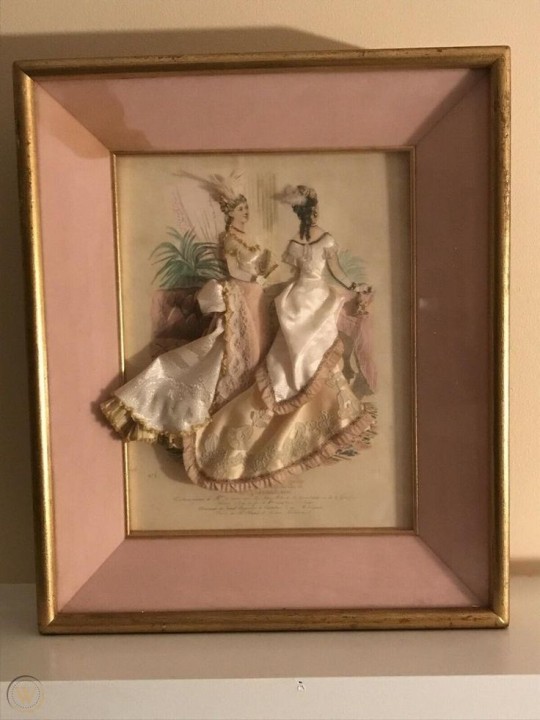



♡ Pictures ♡ decorated with fabrics
#new post#historical fashion#fashion#fashion history#aestethic#coquette#victorian era#victorian england#victorian#edwardian#pictures decorated with fabrics#vintage#pretty bows#pink#pink aesthetic#blue#white aesthetic#parasol#fashion plate
210 notes
·
View notes
Text
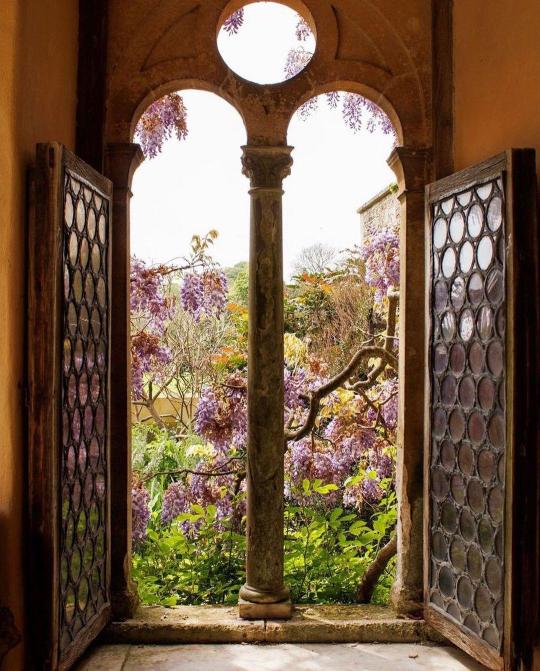




Wisteria Hysteria💜
Gardens at Iford Manor in Wiltshire, near Bath. Created by Edwardian designer Harold Peto when Iford was his home from 1899-1933.
📸Photo by @wordyelaine
📍Iford Manor Gardens, Wiltshire
#dark academia#light academia#classical#academia aesthetic#escapism#academia#books and libraries#classic literature#books#architecture#wisteria#iford manor#wiltshire#bath#england#edwardian#early 1900s#early 20th century#harold peto#gardens#royal core#cottage core#aesthetics#mood#vibe#tumblr
308 notes
·
View notes
Text
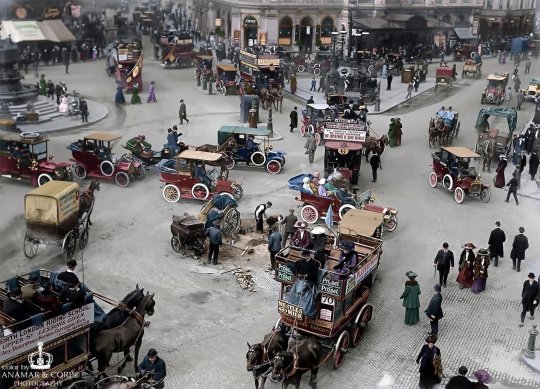
London is a city where everyone is reaching out to create a future.
George Gissing, The Private Papers of Henry Ryecroft (1903)
Piccadilly Circus, London, 1910.
#gissing#george gissing#quote#london#city#england#future#dynamic#energy#creativity#innovation#empire#britain#picadilly circus#edwardian#history
233 notes
·
View notes

